Early-plays or cheated cards are always a pain to deal with. Cards of higher level typically carry more power and more beneficial effects. Some of them have spiralling gains that can exponentially grow in value and overwhelm their opponents in a few turns if they do remain on board. As such, to put it simply, these cards just need to be removed, ideally in a permanent way of course.

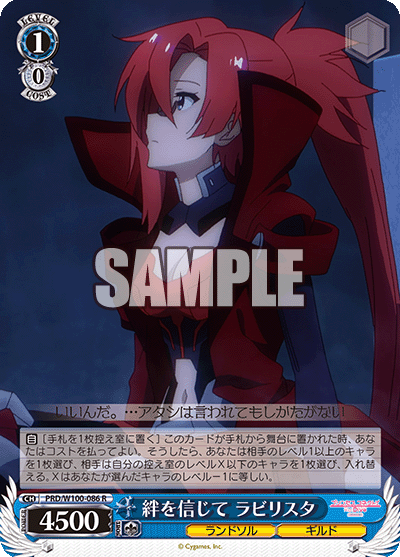
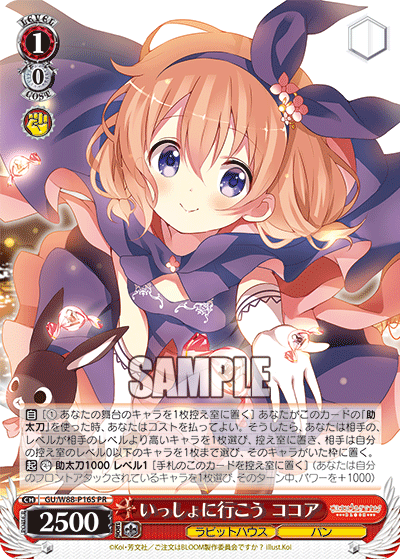
PRD/W100-086R 絆を信じて ラビリスタ (center)
GU/W88-P16S-PR いっしょに行こう ココア (right)
The three most common ways, as shown above from left to right with Adachi, Level-Down, and Anti-Change, are basic tools that are used to rid the field of these heinous threats. One key similarity between all these cards are their associated costs to handle opposing threats. Each of them have their pros and cons, and although their overall function is the same, they have different ways and timings to handle threats. There is no strictly superior option as all of them have different use cases.
First and foremost, with Power playing with the playground toy, is the Adachi profile. There are various sub-types of Adachi profiles which essentially move their targets to different zones in your opponent’s board, but nonetheless, their function remains the same. Every Adachi clone must become reversed in order to manipulate their opposing character. If the opposing character is higher level than your opponent’s current level, you may perform their ability and send that opposing character away. Now Adachi is one of the simplest forms of interactions that you can have to handle threats. Adachis are often very low in power to coincide with their purpose of becoming reversed. They are combat-centric as they need to become reversed, and as such, they come with the costly caveat of leaving an open slot in your front stage during your opponent’s turn. There is also an issue of potentially levelling your opponent during combat since damage comes before combat comparisons which, in turn, prevents your Adachi from punishing your opponent’s early played character now turned fair played.

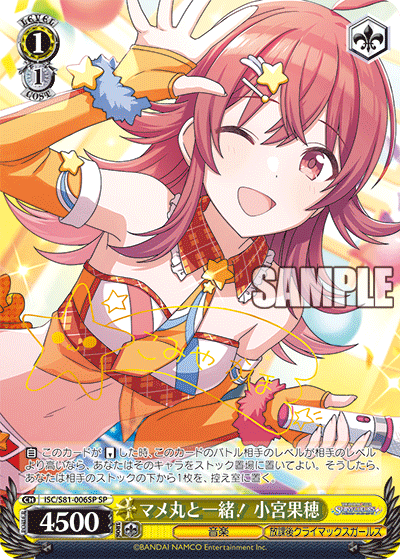

ISC/S81-006SP-SP マメ丸と一緒! 小宮果穂 (center)
LRC/W105-024C 不意の一撃 たきな (right)
At its core, Adachi is efficient, simple, and gets the job done. Most Adachis also contain a soul trigger icon which can be used to benefit certain decks or for the extra damage as a trigger. Adachis are a one-to-one trade for the most part (with some exceptions).
In the center, featuring Labyrista, we have the level-down profile, a rather newer profile compared to the other two. As the name suggests, the profile lowers the level of a particular card on field. By levelling down, the opposing player swaps the chosen card with a character from their waiting room which is one level or lower. Level down can be a cheap way to get rid of an opposing threat, but there is a caveat in the fact that, just like standard reverse Adachi profiles, your opponent can always just pay encore costs to bring that character back to field. One benefit of the profile is that you may choose any card on your opponent’s field as long as they are level one or higher, granting this card higher utility cases than that of a standard Adachi profile. However, since the selection for the new target is based on your opponent’s choice, they may find ways to manipulate your swap to their advantage. Additionally, a level swap can only occur if the opposing player has a character in their waiting room that fulfills that condition to begin with. Meaning, in some cases, especially if your opponent has recently refreshed their deck, the option is not possible.
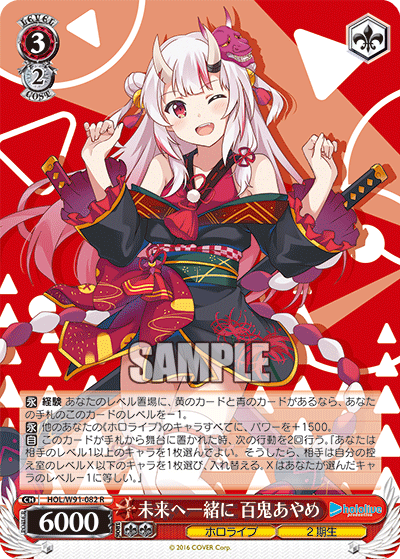
Level-downs are primarily valued for their cheap hand costs in comparison to the general stock-costed Adachi profile. Furthermore, because level-down profiles can target any character that is level one or higher, they have an additional function beyond targeting solely cards that are cheated or early-played. The penalty of having your opponent choose the card they wish to put in the card’s place is circumstantial. If your finishers or late-game cards require additional stock and you do not particularly care about field shenanigans, a level-down profile may be more fitting for your deck.
Lastly, we have the anti-change counter, a very old profile that exists to counter your opponent’s cards when they swing. Now, anti-change counters are very powerful due to the fact that they eliminate your opponent’s entire swing, nullifying all the damage, and forcing your opponent to think twice about their attack order and orientation. Anti-change counters are the most expensive of the three profiles shown in their costs and for good reason. Being usable on your opponent’s turn and not costing you to sacrifice field or hand during your turn with the bonus of potentially saving a character or two with the backup power, a single counter use alone can greatly swing the game in your favour. However, anti-change counters can be very easily telegraphed. The fact that you can only use the ability during trigger step can limit its use. Your opponent can simply side if they believe you have a counter in hand, saving your characters, but nullifying the ability entirely which may or may not help you. Furthermore, the costs are usually enough to deny you a large chunk of resources that could be better suited for your finisher in the later game.

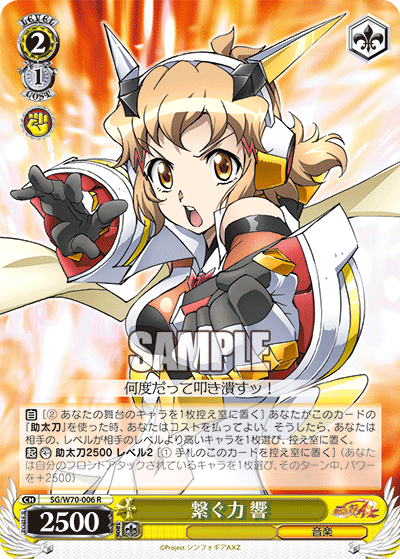
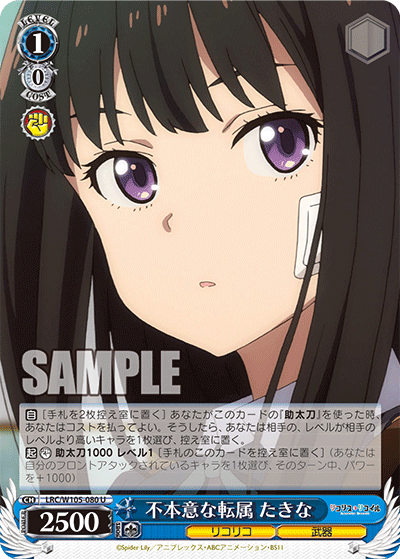
SG/W70-006R 繋ぐ力 響 (center)
LRC/W105-080U 不本意な転属 たきな (right)
Anti-change backups are great and all, but just like the other options, its use cases are dependent on specific factors. Compared to the other two profiles, one strength and weakness this card has is its restricted use during your opponent’s turn. There is no way to actively use this type of profile during your turn. Its greatest weakness lies in awareness and the ability to deny its ability. Furthermore, sometimes, as long as the opposing player’s card gets its value out of the way, the anti-change counter may lack any impact. The best way to use these counters are to try and hide its appearance or threaten that you possess one. Simply the recognition that you may have one is often enough to force your opponent to play differently or otherwise succumb to the consequences. Remember, as a counter, you must have characters in the front that are attacked to use the cards.
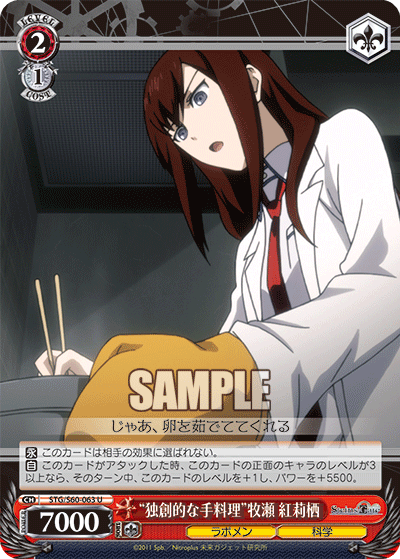
There is another type of profile that is able to deal with these higher level cards; however, they aren’t particularly flexible and are much more prone to interruption. The last class which I didn’t particularly want to mention is that of the older level three killer. One issue that you may have noticed is unlike the other profiles that do work as long as your opponent’s characters are higher level compared to their level, these cards are very niche in their purpose. These cards can only ever kill level three characters and are rather undersized otherwise. Still, these cards can be useful, particularly if you want to maintain field. They do have more power than the typical level down, but chances are, they won’t survive past the following turn. These cards are also notoriously typically only found at level two, but there are some exceptions at level zero with much less power. Lastly, unlike the other profiles that can remove their opposing cards to different zones on the field, these killer profiles are only designed to best level three characters in the power game, meaning your opponent will almost always have the option to encore their character.
It may be optimal to employ multiple profiles rather than use a single solution. Furthermore, your deck should accommodate the best profile that fits well for that deck. Take an eight choice deck for example. Having counters or profiles that carry soul icons could benefit well in that style of deck to generate extra stock or hand. If you play a deck that plays around using ACT [起] abilities, having several backups would be a powerful addition that can also act as a hindrance to your opponent. Even in the case of the level three killers, decks that carry synergy with cards that are level two and higher could use these cards more effectively. The point is that decks should try to add additional utility to these profiles to make maximum use of them. Outside of their actual purpose of interfering with your opponent’s board, these cards could be additional tools that benefit your game plan as well.